No Products in the Cart
3 Vet Tips to Get Your Senior Dog Moving Again

It's common to see older people and dogs having trouble moving around. As we age, we often worry about mobility - the ability to move or walk freely and easily. We fear it will decrease, leaving us hopeless and dependent on others. We also worry about our furry friends as they age and see their ability to keep up with daily activities decrease. Unfortunately, we often assume that losing our mobility with time is normal, but it isn't.
At Jope, we care about your fur baby's well-being. We want to ensure every pet (dog and cat) lives a happy and pain-free life. So we want to give you the tools to help keep your senior dog moving with three simple veterinarian tips.
Also Read: Chondroitin for Dogs - 5 Things You Need To Know - Vet’s Expert Advice
Don't let your dog turn into a couch potato!
A lack of daily physical activity or exercise will increase your senior dog's inability to move freely. As your dog ages, ensure they do not stay still for hours. Make it a point to have them walk around for 10 minutes (or more) every 1-2 hours. You can do so indoors or outdoors, but choose a soft and non-slippery area.


Best Joint Supplements for Senior Dogs - A Vet Review
As our furry companions age, their joint health becomes a priority. Discover vet-reviewed joint supplements tailored for senior dogs, designed to enhance comfort and mobility. Expert recommendations for a vibrant, active life. Learn more now!
Learn More
Frequency and consistency in exercises are fundamental to healthy mobility. Intentional and mindful movements can help maintain your dog's muscle mass and allow all the different muscles in their body to work. Obstacle courses are a great way to help your dog mindfully move around a space.
Key takeaway: As your dog ages, you can shorten the length of daily activities but make regularity a priority!
Also Read: UC-II® Supplement for Dogs
Make your home senior-dog friendly
Unless you have a working dog, chances are they spend most of their time inside with you. So, similarly to puppy-proofing a house, making your home a senior-dog-friendly place is a good idea.
Simples changes can go a long way in ensuring your senior dog won't slip, fall or bump into anything that could harm them.
If you have slippery floors, consider adding a rug, a non-slippery mat, or a carpet. Also, consider stairs or a ramp to help your dog get on/off the soft and in/out of the car. This will avoid having them put unnecessary pressure on their joints.


Check that your dog's resting area is nice and comfortable. Their muscle mass can decrease with age, making it more painful to lay on hard surfaces. Trust us; your dog will thank you! At Jope, we test our pups' beds for ourselves to ensure they pass the comfort test: if we can't sleep in it, our dogs cannot!
Finally, beware of pointy corners and surfaces. With age, your dog's eyesight can decrease, and they might not be as aware of their surroundings. So it's a good idea to pad any sharp edges when our dog often walks around.
Key takeaway: Small home improvements can go a long way to ensure your senior dog moves around freely without running the risk of having them slip, fall, or bump into sharp edges.
Also Read: Is Your Dog Prone to Elbow Dysplasia? Symptoms and Best Treatments
Keep your senior dog's weight under control
Regarding mobility and health, keeping your dog's body lean is best. With age, energy needs decrease; therefore, you should adjust your dog's daily food intake. While calories should be reduced, the overall diet you feed your dog should remain high quality.
Premium quality food is critical to help your senior dog digest and benefit from the nutrients. When buying food for our dogs at Jope, we pay special attention to the quality of the proteins and the fat content. Ask your veterinarian for advice if you'd like to change your senior dog's diet.

As we mentioned, continued activity will allow your dog to move freely and comfortably for longer. It will also help keep their weight under control. So daily exercise and a senior-tailored diet will help your senior dog stay lean and muscular.
Also Read: Dog Hip dysplasia: Symptoms, Treatments and Solutions
Key takeaway: Focus on a high-quality diet with lower calories for your senior dog. Work with your veterinarian to change your dog's food intake mindfully. Daily exercise will be vital to maintaining your dog's healthy weight.
In senior dogs, mobility changes can manifest in many ways, including changes in gait (how dogs walk), balance, and physical strength. In dogs, the number one reason for decreased mobility is osteoarthritis - chronic inflammation in the joint that leads to cartilage breakdown and pain.
Other reasons also exist, but they are not as frequent. Regardless of the reason behind your dog's decreased ability to move around, they are simple actions you can take to help them remain active and safe. This includes regular daily activities, making your house a senior-dog-friendly place, and keeping their weight in check. These three action items will help you keep your dog active so they can move freely and live happy lives!
FAQs
What to do if your dog is barely moving?
Contact your veterinarian right away for a proper evaluation. The origin will be hard to tell without context, and only your vet can properly assess the situation.
When to worry about senior dogs?
As dogs age, certain signs may indicate it's time to consult your vet. These include:
- Struggling to stand or walk
- Noticeable stiffness or limping
- Reduced appetite or weight loss
- Increased sleeping or signs of confusion
- Behavioral changes or withdrawal
These symptoms may be related to arthritis, cognitive decline, or other age-related health issues. The earlier they're addressed, the better your chances of managing them effectively.
What if my dog is disabled and not able to move?
If your dog cannot move due to injury, paralysis, or severe arthritis, immediate veterinary care is essential. Call your veterinarian as soon as possible. They can help assess your dog’s condition and discuss supportive solutions, whether medical treatment, mobility aids, or long-term care options.
How to improve your older dog's mobility?
Supporting mobility in senior dogs involves a combination of smart nutrition, safe activity, and joint care. Key steps include:
- Feeding a high-quality and balanced diet.
- Using evidence-based joint supplements like UC-II® collagen and omega-3 fatty acids.
- Keeping your dog at a healthy weight to reduce joint strain.
- Offering low-impact exercise, such as short walks or swimming.
- Providing comfort tools like ramps or orthopedic beds.
For dogs showing signs of arthritis or stiffness, talk to your veterinarian about a tailored mobility plan, including pain management if needed.






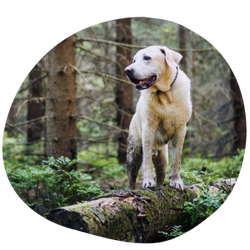



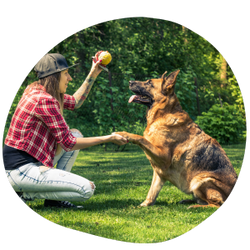
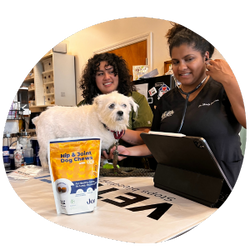
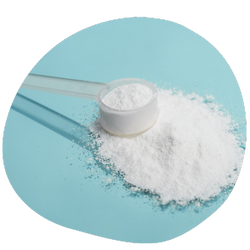
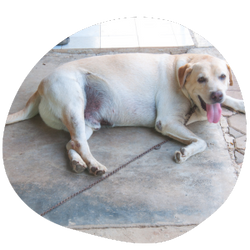

Leave a comment